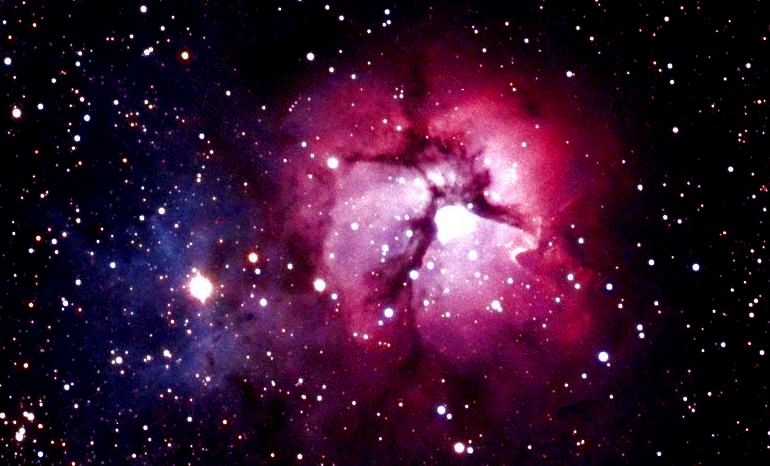
This is a CCD image of the Trifid Nebula. This nebula is about 2,500 light-years away from us, and is about 20 light-years across. The Trifid Nebula is in the same region of the sky and at about the same distance as the Lagoon Nebula. The Trifid Nebula is so named because it is divided into three regions. The red color comes from clouds of gas illuminated by one or more stars in the center of the nebula that excite the gas and cause emission radiation of the gas. The blue color is simply a reflection of star light from gas clouds that are not close enough to the stars to be heated like the red colored clouds, and thus do not produce emission radiation. The contrast between the emission nebula clouds and the reflection nebula clouds is a beautiful feature of the Trifid Nebula. The Trifid Nebula was probably first discovered by French astronomer Le Gentil in 1747. It is believed that it was first named the "Trifid Nebula" by John Herschel, the son of the famous astronomer William Herschel, in the mid-1800's. Charles Messier included it in his first list published in 1769.
This is an LRGB color composite CCD image taken at prime focus on a Takahashi FS-128 refractor using an SBIG ST-8 CCD at f8. A Homeyer color filter wheel was used to acquire the RGB images. MaxIm DL/CCD was used for image acquisition and most processing, and Picture Window 2.0 was used for the LRGB composition.
M20 (NGC 6514)
Constellation: Sagittarius
RA: 18h 02m 18s Dec: -23d 02' 00" (J2000)
March 22, 1999
Image by Sid Leach
Houston, Texas
Recent Images.
Complete list of images.
Description of equipment used to acquire images.
Home
Feedback and comments should go to Sid